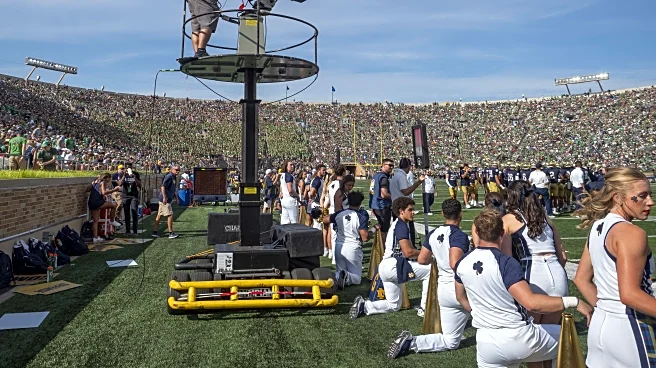What's Happening?
As cable and satellite TV costs rise, many consumers are turning to live TV streaming services as an alternative. Major platforms like YouTube TV, Fubo, Hulu Live, and Sling offer a variety of channel lineups, DVR capabilities, and flexible pricing. Each service has its strengths and weaknesses, with differences in channel availability, regional sports networks, and additional features like 4K streaming.
Why It's Important?
The shift towards live TV streaming services reflects broader changes in media consumption habits, driven by the demand for more flexible and cost-effective viewing options. This trend is reshaping the television industry, challenging traditional cable providers, and influencing the development of new content delivery technologies. Consumers benefit from increased choice and competition, but must navigate complex pricing structures and channel offerings to find the best fit for their needs.
What's Next?
As competition among streaming services intensifies, providers may continue to adjust pricing, expand channel offerings, and enhance user experience to attract and retain subscribers. The industry could see further consolidation or partnerships as companies seek to strengthen their market position. Additionally, advancements in streaming technology and content delivery could lead to new features and improved service quality.
Beyond the Headlines
The rise of streaming services raises questions about the future of traditional television and its role in society. It also highlights issues related to digital access and equity, as not all consumers have equal access to high-speed internet required for streaming. The environmental impact of increased data usage and server demands is another consideration for the industry.












